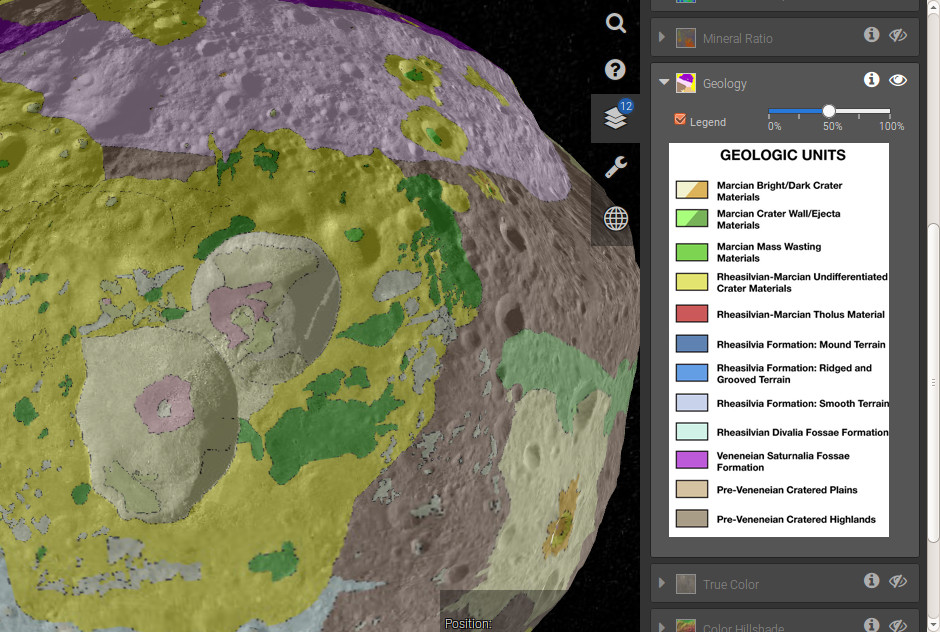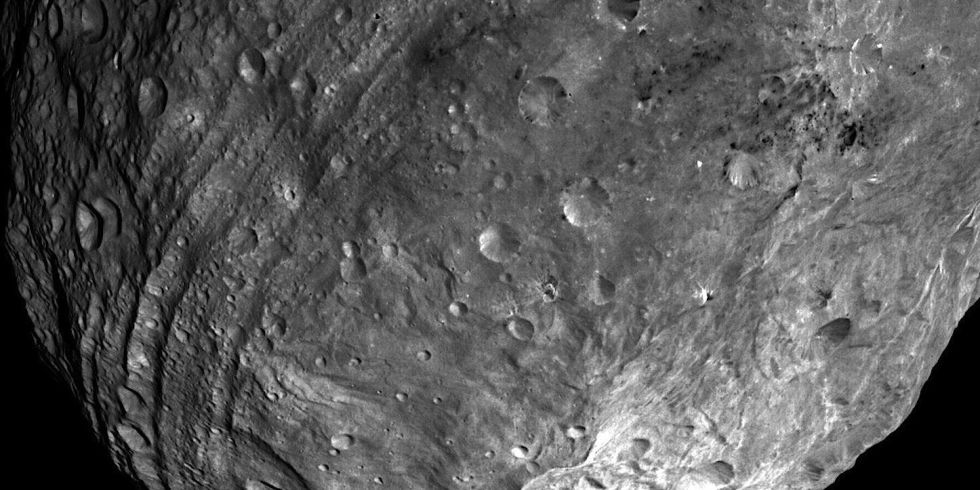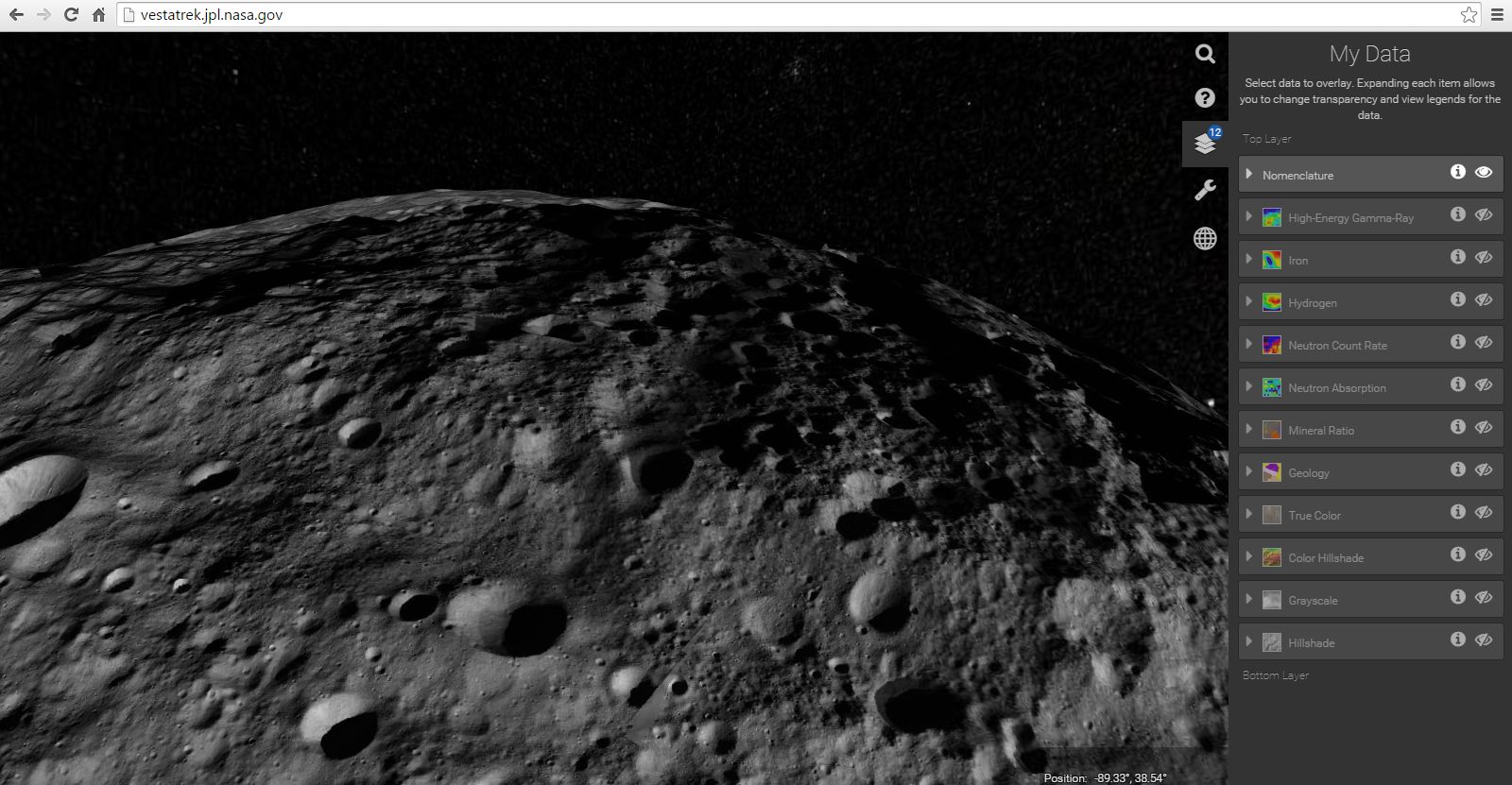As the boundaries of space expand, so does the need to share scientific knowledge and discoveries with the public. NASA is no stranger to using reality computing and 3D printable models to allow the general public and amateur scientists to “boldly go where no man has gone before.”
The latest release from NASA, Vesta Trek is a free, web-based application that explores Vesta, the second most massive object in the asteroid belt after Ceres. Vesta already has a history tying it to Earth, since its discovery in 1807. It is the brightest asteroid visible from the Earth, and, due to several collisions billions of years ago, a nice chunk of Vesta’s surface fell to the Earth in fragments known as howardite, eucrite, and diogenite meteorites. So, yes, pre-Vesta Trek one could hold a piece of the asteroid. But, what if you want the whole world in their hands?
Vesta Trek uses topographical data collected from NASA’s Dawn spacecraft expedition to enable users to 3D print models of Vesta’s surface. Students and space enthusiasts can actually touch the surface of an asteroid 156 million miles from Earth.
Besides the ability to 3D print a topographical map of Vesta, users can also explore the asteroid through interactive maps. Unique data sets examining the geology, mineralogy, elemental make-up, as well as tools to measure heights and depths of surface features and diameters. Users feel as if they were soaring across the surface of Vesta as they use standard gaming controls to navigate their ways around the asteroid.
“There’s nothing like seeing something with your own eyes, but these types of detailed data-visualizations are the next best thing. We’re thrilled to release Vesta Trek to the citizen science community and the public, not only as a scientific tool, but as a portal to an immersive experience that, just by the nature of it, will allow a deeper understanding of Vesta and asteroids in general,” announced the Director of Science Engagement and Partnerships at NASA Headquarters, Kristen Erickson.
Vesta Trek is the first application to use NASA’s Lunar Mapping and Modeling Project (LMMP) capabilities for another astronomical object besides the moon. LMMP has traditionally provided the public and scientists with data visualization and analysis tools for our moon, collected through multiple missions and instruments. But, now, Vista Trek is expanding LMMP to use data tools and analysis from other heavenly bodies to produce a similar interactive experience. NASA confirmed that, along with Vesta Trek, LMMP is developing similar applications for other worlds in our Solar System. The next one to look forward to will most likely be the dwarf planet Ceres, which the Dawn spacecraft is currently exploring.





